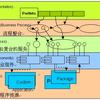We propose a novel performance metric for articulated robots with distributed directional sensors called the sensor observability analysis (SOA). These robot-mounted distributed directional sensors (e.g., joint torque sensors) change their individual sensing directions as the joints move. SOA transforms individual sensors axes in joint space to provide the cumulative sensing quality of these sensors to observe each task-space axis, akin to forward kinematics for sensors. For example, certain joint configurations may align joint torque sensors in such a way that they are unable to observe interaction forces in one or more task-space axes. The resultant sensor observability performance metrics can then be used in optimization and in null-space control to avoid sensor observability singular configurations or to maximize sensor observability in particular directions. We use the specific case of force sensing in serial robot manipulators to showcase the analysis. Parallels are drawn between sensor observability and the traditional kinematic manipulability; SOA is shown to be more generalizable in terms of analysing non-joint-mounted sensors and can potentially be applied to sensor types other than for force sensing. Simulations and experiments using a custom 3-DOF robot and the Baxter robot demonstrate the utility and importance of sensor observability in physical interactions.
翻译:暂无翻译




